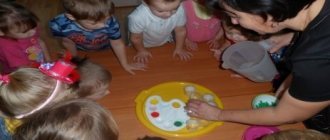Large companies and child labor
This year, one of the world's human rights organizations made a report. It accused three leading companies that specialize in the development of electronic equipment, namely Samsung, Apple, Sony. They were suspected of purchasing minerals that were mined through child labor. According to the report, children as young as seven work in mines in the Democratic Republic of Congo. They mine minerals that are needed to create lithium-ion batteries.
This is also important to know:
Outstaffing and outsourcing - differences
CEOs of companies that buy minerals say they do not tolerate the use of child labor. However, eyewitness accounts suggest otherwise. Experts from the Human Rights Organization claim that such work is hazardous to health. It is known that these mines have a high mortality rate. According to eyewitnesses, more than 80 minors died there over the past year alone.
According to the UN Children's Fund, at least 40 thousand children are engaged in mineral extraction in the mines of the DRC. Global companies deny this fact. They claim that they do not purchase goods obtained in this way.
Employee training
The head of the preschool educational institution is obliged to provide training on labor protection to all employees of the institution. The training procedure is regulated by Resolution of the Ministry of Labor of the Russian Federation and the Ministry of Education of the Russian Federation dated January 13, 2003 N 1/29 “On approval of the Procedure for training in labor protection and testing knowledge of labor protection requirements for employees of organizations.”
OSH training is provided to employees of all professions and positions:
- within a month after hiring;
- when transferring to another job;
- during advanced training.
Further training is carried out:
- for managers and specialists – once every 3 years;
- for blue-collar workers, the frequency is determined by the head of the institution.
OSH training cannot be conducted less frequently than specified in current regulations, industry and inter-industry rules.
Employees can undergo training at a specialized training center according to the appropriate program, as well as at the institution itself. As a rule, only those responsible for occupational safety in kindergartens, as well as members of the permanent operating commission for testing knowledge of labor protection requirements, are trained in training centers.
Labor safety training for employees of an institution is approved by the head of the preschool educational institution and is carried out according to training programs developed for professions, positions and for each type of work.
Workers who have not completed labor safety training and knowledge testing cannot be allowed to work.
Occupational safety training ends with testing the knowledge acquired by the employee. For this purpose, the institution, by order of the head, creates a permanent commission to test knowledge of occupational safety requirements, consisting of at least three people.
The number of people on the commission for testing knowledge of labor protection requirements must be odd.
The commission usually includes the head of the preschool educational institution, deputy heads (for administrative and chemical work, chemical engineering, labor management, water management), an occupational safety specialist, and the chairman of the trade union organization (the representative for labor protection from the workforce).
Knowledge testing is carried out in accordance with regulations governing labor protection issues, compliance with the requirements of which is included in the job responsibilities of employees.
The results of the knowledge test are documented in the appropriate protocol.
Legislation on labor protection in preschool educational institutions
Work on occupational safety in preschool educational institutions must be carried out strictly in accordance with the regulations of the Russian Federation, which include:
- Labor Code of the Russian Federation dated December 30, 2001 N 197-FZ.
- Resolution of the Ministry of Labor of Russia, Ministry of Education of Russia dated January 13, 2003 N 1/29 “On approval of the Procedure for training in labor protection and testing knowledge of labor protection requirements for employees of organizations.”
- Federal Law of December 28, 2013 N 426-FZ “On special assessment of working conditions.”
- Resolution of the Ministry of Labor of Russia dated October 24, 2002 N 73 “On approval of the forms of documents necessary for the investigation and recording of industrial accidents, and provisions on the features of the investigation of industrial accidents in certain industries and organizations.”
- Order of the Ministry of Health and Social Development of Russia dated 03/01/2012 N 181n “On approval of the Standard List of measures annually implemented by the employer to improve working conditions and safety and reduce levels of occupational risks.”
- Order of the Ministry of Health and Social Development of Russia dated June 1, 2009 N 290n “On approval of intersectoral rules for providing workers with special clothing, special footwear and other personal protective equipment.”
- Order of the Ministry of Health and Social Development of Russia dated December 17, 2010 N 1122n “On approval of standard standards for the free distribution of flushing and (or) neutralizing agents to workers and the labor safety standard “Providing workers with flushing and (or) neutralizing agents.”
Documents required when applying for a job
To get a teenager to work you need:
- document confirming the identity of the person entering the organization (general civil passport);
- confirmation of education, receipt of a certain qualification or certificate of suspension of education;
- work book (if available);
- document of a participant in the pension system (SNILS), except for the situation of hiring for the first place of work;
- confirmation of military registration (for boys);
- permission of the parent (guardian), as well as the guardianship authorities, to employ a child under 16 years of age;
- medical certificate.
The procedure established by the Ministry of Health and Social Development of the Russian Federation (Order No. 302, 04/12/2011) provides for the mandatory medical examination of adolescents every year until they reach adulthood.
Attention! A medical examination of a citizen is carried out at the expense of the enterprise (Articles 69, 266 of the Labor Code of the Russian Federation). If a minor employee does not have a medical certificate, the management of the organization faces liability for an administrative violation (Article 5 of the Code of Administrative Offenses of the Russian Federation).
Responsibility for the use of child labor
The law tells us that, subject to the conditions described above, a minor can work. But anything beyond these requirements is a violation - administrative or criminal.
This is also important to know:
Irregular working hours according to the Labor Code of the Russian Federation in 2022
The Criminal Code of the Russian Federation has an article that concerns child labor - 127.2 “Use of child slave labor.”
Unlawful use of child labor can result in the following for an employer:
- Article 6.19 of the Code of Administrative Offenses of the Russian Federation - liability for a legal entity if it encouraged the organization of child labor. For example, he provided premises for this, organized work, looked for workers. Sanctions under this article: a fine in the amount of 1 to 5 million rubles, a ban on conducting activities for up to 3 years;
- Article 127.2 of the Criminal Code of the Russian Federation – child slavery. Imprisonment for up to 10 years, forced labor for up to 5 years. As an additional punishment, a ban on holding a managerial position for up to 15 years and a fine may be issued.
Parents may also be held liable if it is established that they contributed to their child working outside the legally established time limits and requirements in general. Questions may also arise for the guardianship and trusteeship authority, since they had to give permission to work.
Criminal liability
Article number 127.1, part of the current Criminal Code, states what penalties are imposed on criminals guilty of exploiting child slave labor. If an individual who has not reached the age of eighteen was forced to perform work of a slave nature, and he, in turn, was not able to refuse to perform it, then the second part of Article 127.1 comes into force.
As a punishment, the offender is expected to perform forced labor. You will need to work for them for a maximum of five years. Imprisonment of the convicted person for a term of three to ten years is also possible. In addition, the judge may additionally activate a ban on the offender from performing his main activity for fifteen years. This punishment is optional and can be approved or not (in addition to imprisonment).
It should be noted that a ban on carrying out an activity is imposed in cases where the convicted person tried to involve child labor in it.
In some situations, it happens that as a result of the use of child labor on a slave scale, the child’s health is seriously harmed or he even dies. In such cases, the third part of Article 127.1 comes into force, and criminals, in turn, face the most severe forms of criminal penalties.
The guilty individual is imprisoned. The minimum period during which this sanction is valid is eight years, and the maximum period for the validity of such a punishment is fifteen years. In addition, an individual may be restricted in freedom for an additional year.
The Criminal Code also contains the following legislative acts that address issues of child labor exploitation:
- Article 127. This act regulates the types of liability for criminals who unlawfully deprived an individual of his freedom, but this was not kidnapping. If the role of the victim was a minor individual, then the second part of the article comes into force. Punishments include forced labor for five years or imprisonment for a minimum of three years and a maximum of five years. If such deprivation of liberty caused death or serious harm to the health of the victim, then the person is deprived of liberty for 4-8 years.
- Article 127. This article is devoted to the issues of trafficking in minors for the purpose of subsequent exploitation of their labor (part two). The punishment is imprisonment for 3-10 years. Also, the offender may be banned from holding his position for another 15 years. Another additional sanction is a restriction of freedom for a two-year period.
Briefings
In kindergartens, it is mandatory to provide instructions on occupational safety (Article 212 of the Labor Code of the Russian Federation). The head of the institution is prohibited from allowing employees who have not completed their duties to perform their official duties.
The types of briefings, the procedure and requirements for organizing them by the employer are established by Resolution of the Ministry of Labor of the Russian Federation and the Ministry of Education of the Russian Federation dated January 13, 2003 N 1/29 “On approval of the Procedure for training in labor protection and testing knowledge of labor protection requirements for employees of organizations.”
Let's look at the main types of safety training.
| Type of instruction | Who is it for? | In what cases is it carried out? | Conducted by whom |
| Induction training | To all employees. | When applying for a job. | Manager / occupational safety specialist. |
| Initial briefing | To all employees. Exception: employees who are exempt from training by order of the head of the organization in accordance with clause 2.1.4. Resolution No. 1/29 of January 13, 2003 | When applying for a job. | The immediate supervisor of the work, appointed by order. |
| Re-briefing | To all employees. Exception: employees who are exempt from training by order of the head of the organization in accordance with clause 2.1.4. Resolution No. 1/29 of January 13, 2003 | Regularly, at least once every 6 months or at least once every 3 months, if the work involves increased danger and this requirement is established by industry labor protection rules. | The immediate supervisor of the work, appointed by order. |
| Unscheduled briefing | The list of employees is determined by order of the head of the organization. | At the request of supervisory authorities. After an emergency or accident occurs; When launching new equipment. When new labor protection requirements come into force. After a long production downtime. | The immediate supervisor of the work, appointed by order. |
| Targeted briefing | The list of employees is determined by order of the head of the organization. | When performing one-time work not related to direct job responsibilities. When eliminating the consequences of accidents and natural disasters. When performing work according to a work permit. When organizing mass events and excursions. | The immediate supervisor of the work, appointed by order. |
Why are instructions needed? First of all, to prevent the occurrence of dangerous situations and injuries during the performance of work duties. Kindergarten employees must know their areas of responsibility, and in the event of a dangerous situation, they must help teachers prevent injury to the young children entrusted to them.
All briefings end with an oral test of the knowledge acquired by employees.
Punishment for violating children's work rules
The child himself, who was striving for quick employment, will not bear any responsibility, nor will his parents who allowed illegal labor. Only the employer will be held responsible in such a situation.
This is also important to know:
Deadlines for payment of vacation pay according to the law, calculation of compensation
So, if an employer does not officially register employment relations with teenagers or makes errors in this registration, a penalty may be applied to him.
Namely:
- A fine of 1,000 to 5,000 rubles – for officials;
- For individual entrepreneurs – a fine of 1,000 to 5,000 rubles or administrative suspension of activities for up to 90 days;
- For legal entities - a fine of 30,000 to 50,000 rubles or administrative suspension of activities for up to 90 days.
Such measures are prescribed in Art. 5.27 of the Code of Administrative Offenses of the Russian Federation and are punished for violations of labor and labor protection legislation.
For each individual violation of the rules of the Labor Code of the Russian Federation, punishment is provided in accordance with Art. 4.4 Code of Administrative Offenses of the Russian Federation.
Employers are often not afraid to violate the norms of the Labor Code of the Russian Federation and exploit child labor by deceiving teenagers and not paying them wages. Few of them will complain about the behavior of the company in which they worked.
Documentation on labor protection in preschool educational institutions
Remember that it is important to document all actions aimed at complying with current labor laws. Therefore, the head of the preschool educational institution must also ensure that the institution has the following mandatory documents on occupational safety:
- orders and instructions on the appointment of persons responsible for organizing certain labor protection processes;
- occupational safety instructions (for positions and professions; by type of work; when operating equipment);
- occupational safety magazines;
- regulations (regulations on occupational safety and health standards, regulations on occupational safety training, regulations on the issuance of personal protective equipment, regulations on investigation of NS, etc.);
- training programs;
- occupational safety training programs (for positions and professions; by type of work);
- training protocols for employees of the labor protection institution and training certificates for responsible persons;
- personal cards for issuing PPE and issuing flushing and (or) disinfectants;
- lists of labor protection;
- occupational safety action plan for the current year.
You can read more about this in our article What labor protection documents should be in every preschool educational institution.






